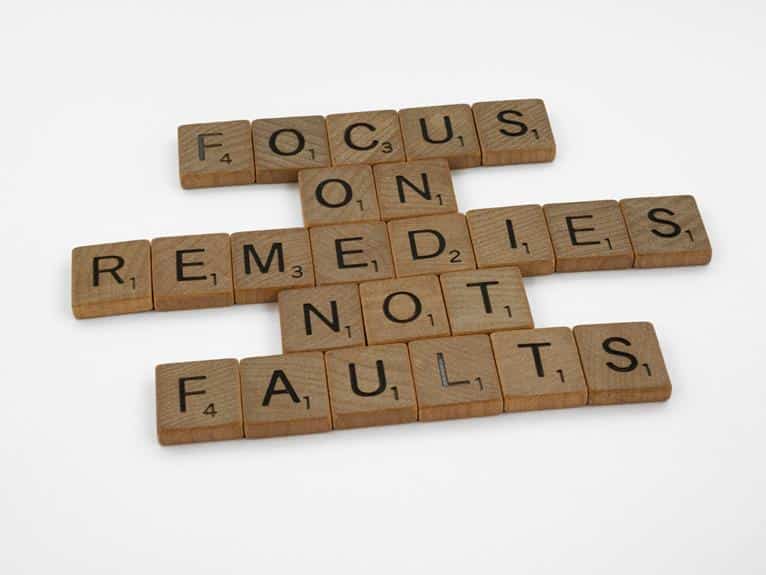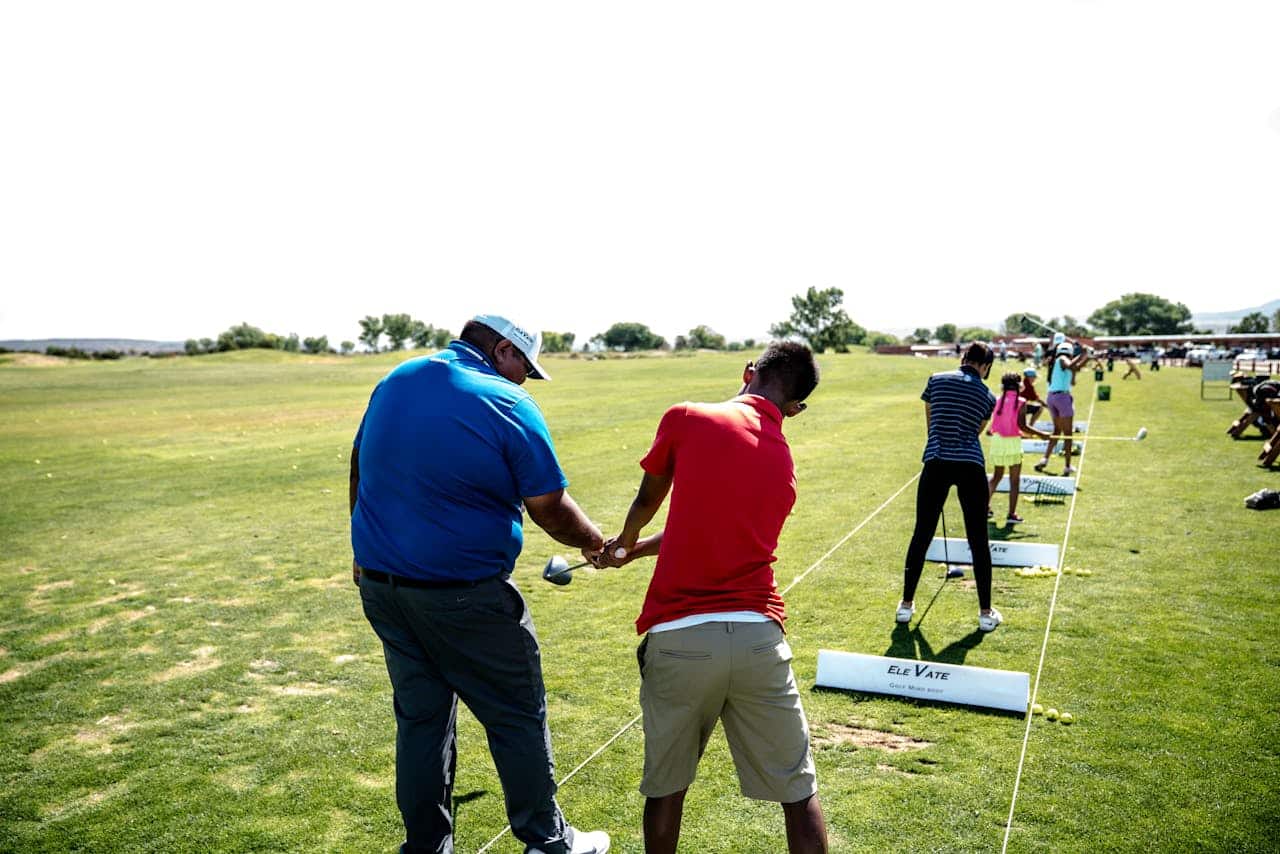
Precision putting and green reading tips are essential components for any golfer aiming to elevate their game. Mastering these skills can be the difference between sinking that crucial putt or walking away with frustration.
The art of precision putting goes beyond mere mechanics; it encompasses a deep understanding of the green’s intricate details and your ability to navigate them effortlessly. Whether you’re an amateur looking to improve your weekend rounds or a seasoned player striving for competitive excellence, honing these abilities will undoubtedly lead to more successful outcomes on the course.
In this article, we’ll unlock the secrets behind precision putting and offer green reading tips that can transform your approach to the short game. Readers can expect comprehensive insights into every facet of effective putting-from the fundamentals like grip and stance to more nuanced strategies such as visualizing putts and controlling speed. By applying these tried-and-true techniques, you’ll not only enhance your accuracy but also build greater confidence each time you step onto the green.
We’ll delve into mastering green reading by helping you understand how to assess slopes and grain, thus enabling you to make more informed decisions when lining up your shots. Additionally, we’ll explore advanced tools and technologies that can further refine your craft. Through a mix of practical drills, mental exercises, and common mistake corrections, our goal is to equip you with a complete toolkit for golfing success. So grab your favorite putter, and let’s dive in.
The Fundamentals of Precision Putting
Precision putting is an art that relies on a strong foundation of fundamental skills. The key elements that every golfer should master include the grip, stance, and stroke. Let’s break these components down for a better understanding.
Grabbing the putter correctly is the first step towards consistent and accurate putting. A common approach is the “reverse overlap” grip, where the index finger of the top hand overlaps the fingers of the bottom hand. This grip promotes stability and minimises unwanted wrist action during the stroke. Experimenting with different grips until you find one that feels comfortable can make a significant difference in your performance.
Your stance acts as your anchor while putting. Stand with your feet shoulder-width apart to create a stable base; your knees should be slightly bent to maintain balance throughout the stroke. Position yourself so that your eyes are directly over or slightly inside the ball to ensure better alignment and accuracy. Consistency in your stance will lead to more reliable strokes, eliminating variables that could throw off your putt.
The putting stroke should be smooth and controlled, focusing on maintaining a pendulum-like motion driven by your shoulders rather than your wrists or hands. To develop this touch, practice short putts regularly while paying close attention to keeping your wrists firm and stable throughout the motion. Incorporating tips from precision putting and green reading experts can transform how you approach each putt.
As you work on solidifying these fundamentals-grip, stance, and stroke-you’ll find that maintaining a consistent routine becomes easier, helping you instil confidence on every green you encounter. Developing these foundational skills doesn’t just improve individual aspects of your game; it creates a reliable system that’s crucial for mastering both straightforward and challenging putts alike.
Mastering Green Reading
Green reading is an art that every golfer needs to master to enhance their putting performance. One of the fundamental aspects of green reading is understanding the slope and grain of the green. The slope refers to the inclination or tilt of the green, which can significantly influence the direction and speed of your putt.
To accurately assess the slope, stand behind your ball and look towards the hole, then traverse around both sides to get a comprehensive view from different angles. This multi-angle inspection helps in identifying subtle breaks in slopes that can be easily missed if only viewed from one perspective.
In addition to slope analysis, understanding the grain of the green is crucial. The grain refers to the direction in which the grass grows and can affect how fast or slow your ball rolls. Greens with grain running towards you will make putts slower, while those with grain running away will make them faster.
You can usually identify the grain by looking at its shine; shiny parts indicate down-grain (faster) areas, whereas duller spots signify into-the-grain (slower) zones. For improving precision putting and green reading tips, always check for changes in color and texture on different sections of the green.
Using advanced tools like aim charts and digital green reading technologies can further refine your skill set for complex greens. Aim charts provide a visual guide on where to aim based on various slopes and grains you might encounter on a particular green. Moreover, several digital gadgets now use 3D mapping technology to scan greens more accurately than ever before.
Apps like GolfLogix Green Books offer detailed breakdowns of topography helping golfers understand precise break points better. Consistent practice with these tools not only elevates your game but also equips you with invaluable insights for precision putting under diverse conditions.
| Aspects | Details |
|---|---|
| Slope Analysis | Inspect from multiple angles: front, sides. |
| Grain Understanding | Identify by shine: shiny (down-grain), dull (into-the-grain) |
| Advanced Tools | Aim charts, digital technologies like GolfLogix Green Books. |
The Role of Speed and Distance Control
Speed and distance control are paramount in mastering the art of putting. While achieving the correct line is crucial, the putt’s speed often determines whether it will drop into the cup. Balancing these two elements can turn three-putts into one-putts, significantly lowering your score. To enhance your precision putting and green reading tips, focus on understanding how different factors influence the speed of your putt.
First, consider the slope and grain of the green. Uphill putts typically require more force than downhill putts. Likewise, when putting across grain (grass blades lying against you), you’ll need more power compared to putting with the grain (grass blades lying away from you). Addressing these variables before making a stroke helps golfers better gauge their effort and adjust appropriately.
To improve your distance control, incorporate specific drills into your practice routine:
1. Gate Drill: Set up two tees or coins slightly wider than your putter’s head about 3-6 feet from each hole. Aim to consistently roll balls through this “gate” without touching them.
2. Ladder Drill: Place markers at increasing distances (5 ft, 10 ft, 15 ft) from the hole; try to stop a ball at each marker sequentially.
3. Metered Putting: Place markers at equal intervals leading up to a hole; first try lagging close shots then increase distance gradually while maintaining precise speed.
Additionally, exercise tools like aim charts or digital apps can provide insights into real-time adjustments needed during practice rounds. Incorporating these elements improves not only physical capabilities but also aids strategic planning for high-stakes situations on actual greens.
Maintaining consistent tempo throughout every stroke is essential for exerting reliable force and achieving desired speeds under varying conditions-deliberate preparation combined with practical drills offers seamless integration towards finesse-driven golfing prowess overall.
Visualising the Putt
Visualisation is a powerful tool that can significantly improve your putting performance on the green. One essential technique involves creating a mental image of the ball’s entire journey from your putter to the hole.
Start by standing behind the ball and picturing its path, taking into account any slopes, breaks, or grain variations in the green. Imagine the speed and line needed to make an ideal putt, visualising how the ball will roll towards and ultimately drop into the cup.
To aid in this visualisation process, it can be helpful to break down each component of your putt:
- Line: Identify a target point on your intended line, such as a blade of grass or discoloured spot a few feet in front of you.
- Speed: Envision how hard you’ll need to stroke the ball. This includes considering uphill or downhill elements and adjusting accordingly.
- Roll: Picture how smoothly you want the ball to glide over the grass, maintaining that constant pace towards its destination.
Maintaining focus during this visualisation exercise is crucial. Clear your mind of distractions and dedicate your attention solely to this mental rehearsal. Breathe deeply and relax your body; tension can hinder both your imagination and actual putting performance. You might find it beneficial to close your eyes momentarily after addressing the ball for enhanced concentration-this practice helps reinforce the image of that perfect putt in your subconscious mind.
Additionally, using premium putting tips like precision putting and green reading tips can elevate your game substantially. These techniques transcend basic mechanics-focusing instead on mindfulness and detailed visual assessments-which are integral components for mastering precision putting. By routinely implementing these strategies during practice sessions, you’ll find that they gradually become second nature on game day, guiding you toward more consistent performance outcomes on challenging greens.
By regularly practicing visualisation techniques alongside physical drills, you’re essentially reinforcing both mental and muscle memory simultaneously. Over time, this dual approach helps build unwavering confidence in every aspect of your putting routine-from choosing the right line to executing with precision-a surefire recipe for golfing success.
Common Putting Mistakes and How to Avoid Them
Many golfers struggle with putting, often due to a few common mistakes that can significantly hinder their performance. The first frequent error is improper alignment. Poor alignment can lead to misdirected putts regardless of how well you hit the ball. To improve your alignment, focus on positioning both your feet and shoulders parallel to the target line. Utilize training aids like alignment sticks or markers on the green during practice sessions to develop a habit of proper alignment.
Another typical mistake is inconsistent stroke tempo. A steady tempo helps in maintaining precision throughout your putt. Many golfers either rush their stroke or take an overly aggressive approach, resulting in poor control over the putter face during impact. Developing a smooth and consistent stroke can be achieved through drills such as the metronome drill or by simply counting out loud during your putting stroke to maintain rhythm.
Lastly, some golfers struggle with reading greens accurately, which impacts their ability to judge both speed and break effectively. This often leads to underestimating or overestimating the slope and grain direction of the green. One tip for better green reading is to analyze it from multiple angles-look at it from behind the ball, behind the hole, and even along your intended line of play.
Incorporating precision putting and green reading tips into your routine will help you gauge these factors more accurately. Over time, this methodical approach will naturally become an integral part of your putting strategy.
Common mistakes also include inconsistent grip pressure and failing to follow through properly on putts:
– Inconsistent Grip: Gripping too tightly can impede natural movement while gripping too loosely may result in loss of control.
– Partial Follow-through: Inadequate follow-through impedes accuracy; focus on completing each putt smoothly.
By identifying these common errors and actively working on correcting them through focused practice sessions, you’ll find that your overall putting game improves significantly.
Advanced Green Reading Tips and Techniques
The Art of Aim Charts
For the seasoned golfer looking to elevate their green reading precision, employing aim charts can be a game-changer. Aim charts help you visualize the exact trajectory your ball needs to follow, considering varying slopes and breaks.
These charts are often crafted by charting multiple putts from different positions on the green, helping golfers memorise how specific sections behave under different conditions. Using these visual aids allows for precision putting as it minimises guesswork and enhances your confidence in your reads.
Embracing Digital Green Reading Technologies
In today’s digital age, traditional techniques are being complemented by advanced technology designed to refine your green reading skills. Apps like PuttView and Hole19 offer real-time green reading assistance through augmented reality.
These technologies digitize the contours of the green and provide instant feedback on slope readings and optimal putting lines. Another remarkable tool is the use of laser rangefinders, which deliver precise distance measurements that can significantly aid in speed control-a crucial component of successful precision putting.
Reading Complex Greens: Multi-Angle Analysis
When faced with greens featuring intricate undulations or multi-tiered setups, analyzing from multiple angles becomes critical. Begin by surveying from behind the ball, then move to assess from behind the hole to understand the full scope of elevation changes and possible break points. Adding a side view inspection will give you additional insight into subtle slopes that may influence ball direction.
Remember, factoring in variables such as grass type and surface grain further hones your ability to make accurate reads. Combining these methods with precision putting and green reading tips ensures a well-rounded approach to tackling even the most challenging greens.
Practice Makes Perfect
When it comes to boosting your precision putting and green reading skills, consistent and targeted practice is essential. A useful drill to begin with focuses on developing a reliable stroke. Start by setting up a putting gate using two tees placed just wider than your putter head. This will help ensure that you keep the putter face square at impact, promoting a straight, accurate roll. Repeat this drill regularly to build muscle memory for a repeatable stroke.
Another valuable exercise is the circle drill, which helps improve both distance control and break reading. Arrange 6 to 10 golf balls in a circle around the hole at varying distances (e.g. 3, 6, and 9 feet).
The goal is to sink each ball without missing consecutively; if you miss one, start over from the beginning. This drill teaches you how to adjust your putting speed depending on slope conditions and distance-essential for mastering precision putting and green reading tips.
Incorporating technology can further enhance your practice sessions. Many golfers use digital green reading apps that provide detailed data on slopes and breaks of various greens. These tools can simulate different putting scenarios so you can practice reading greens under diverse conditions in the comfort of your home or local course. Using technology not only makes practice more engaging but also equips you with advanced techniques that are pivotal as you strive for consistency.
| Drill | Purpose |
|---|---|
| Putting Gate Drill | Ensures putter face alignment for a straight roll. |
| Circle Drill | Improves distance control and break reading. |
| Digital Green Reading Apps | Simulates varied conditions for advanced green reading practice. |
The Psychological Aspect of Precision Putting
Precision putting and green reading tips are not just about mastering the technical elements; the psychological aspect of precision putting is equally vital. The mind’s state can significantly influence putting performance, and being mentally prepared can often be the difference between a missed shot and sinking the ball beautifully.
To start with, developing a pre-putt routine that involves deep breathing exercises or visualisation techniques can help calm nerves and build focus. These practices help reduce anxiety, clear your mind of distractions, and enable you to concentrate solely on your stroke.
Such phrases might sound simplistic but repeatedly focusing on positive outcomes helps build confidence over time. Additionally, maintaining an even-keeled temperament regardless of whether you miss or sink a putt is crucial for staying focused throughout the game.
Lastly, setting small, realistic goals during practice sessions can provide a psychological boost and promote consistent improvement in precision putting and green reading skills. Instead of merely aiming to reduce strokes per round, break down your goals into more manageable tasks such as improving distance control or reducing three-putts from specific distances. Track your progress diligently using visual tools like charts or apps to see improvements over time.
| Technique | Benefit |
|---|---|
| Deep Breathing | Reduces Anxiety |
| Positive Self-Talk | Builds Confidence |
| Setting Small Goals | Promotes Consistent Improvement |
Conclusion
The journey to mastering precision putting and green reading is not merely a physical endeavor; it intertwines skill, practice, and mental fortitude. As you’ve navigated through this comprehensive guide, you have unlocked essential techniques-from the fundamentals of grip, stance, and stroke to the nuanced art of interpreting green surfaces. Your newfound knowledge about maintaining a consistent putting routine will undoubtedly pave the way for more reliable and successful putts.
Equally as important are the strategies for visualizing your putt and managing speed and distance control. Drills aimed at honing these skills are vital in achieving consistency on the green. By incorporating exercises that improve both your physical and mental game, you engage all aspects necessary for success. Visualisation techniques enhance focus while ensuring that your confidence remains unshaken-even under pressure.
To reach an advanced level of proficiency, integrating sophisticated tools like aim charts and digital green reading technologies into your practice can provide invaluable insights. From understanding complicated greens to avoiding common mistakes, every aspect of your precision putting has been addressed with expert tips and actionable advice.
Remember, continuous improvement comes from dedicated practice paired with an informed approach-ensuring that when it’s time to make that crucial putt, you’re equipped with unparalleled precision putting and green reading tips that set you apart on the course.
Additional Resources and Tools for Golfers
In conclusion, mastering precision putting and green reading is an essential skill that can significantly lower your scores and boost your confidence on the golf course. By understanding the basics of putting mechanics and consistently practicing a solid routine, you can develop a reliable foundation for success. Additionally, learning how to accurately read the slope and grain of greens will allow you to make more informed decisions, ultimately leading to better outcomes.
Combining these physical techniques with strong mental strategies is equally important. Visualizing your putt from start to finish, maintaining focus, and developing a calm mindset under pressure can transform your overall performance. Avoiding common mistakes through mindful practice and correction further streamlines your putt execution. Drills tailored towards improving putt speed control and visualization will help reinforce these skills over time.
Advanced techniques such as utilising aim charts and digital green reading technologies offer additional layers of precision for experienced golfers looking to elevate their game even further. The key takeaway is consistency; regular practice coupled with tracking progress ensures continuous improvement. Embrace these precision putting and green reading tips into your training regimen, and witness remarkable enhancements in not only your putting abilities but your overall golfing success.




